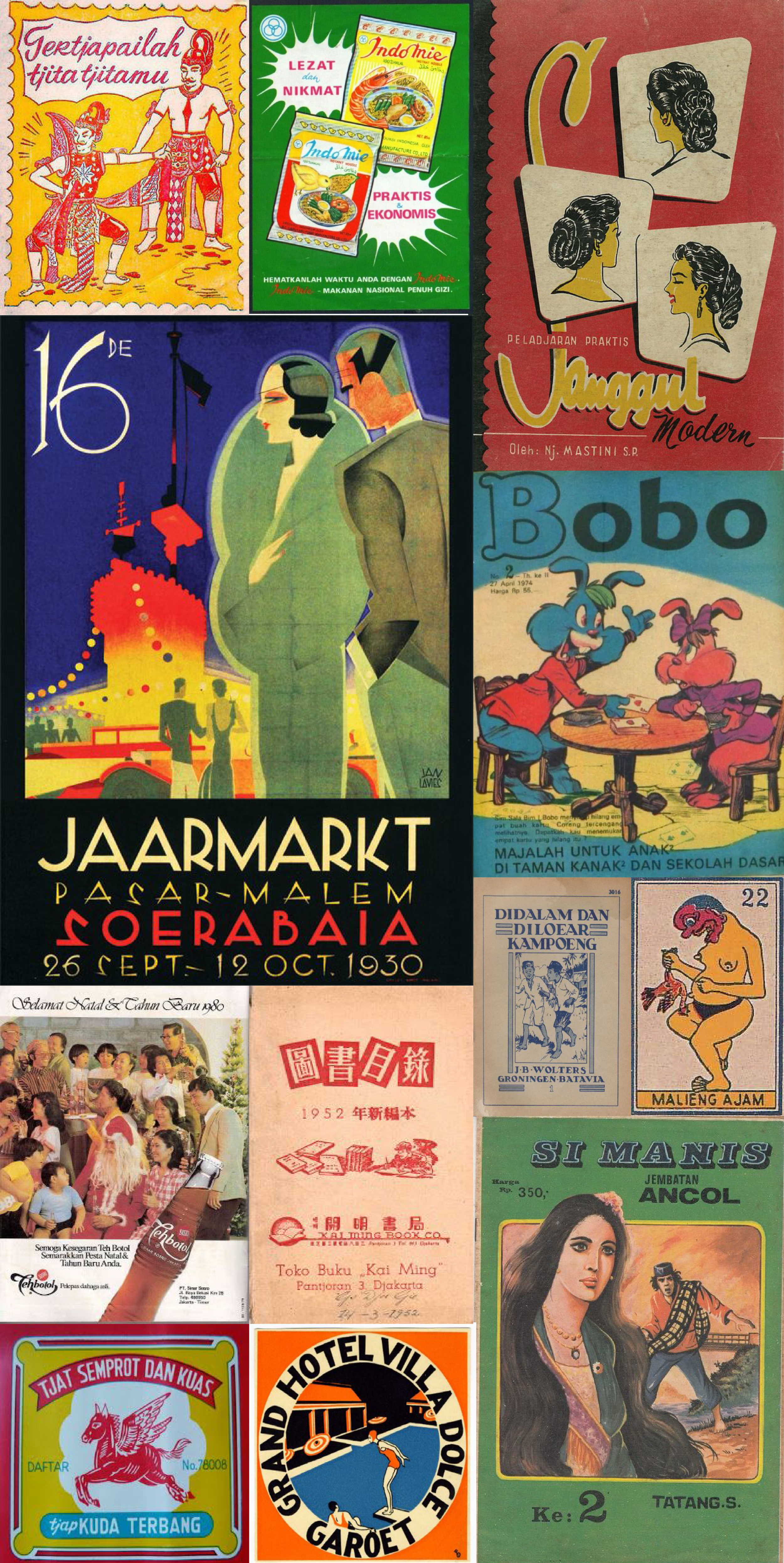Indonesian Kitsch Culture: The Search for National Visual Identity
"Good design should reflect a sense of human history–some aspect of where we've come from."
– Hartmut Esslinger
After deciding on the specific main issue of my project that I will be focusing on which I wrote elaborately in the previous post, I designed what will be my next intervention, which is an online platform-turned-community where everyone can contribute into called INDONESIAN KITSCH CULTURE.
This platform was designed to facilitate archival space of Indonesian graphic arts which are lacking both physically and virtually, as well as opening some new discussions between users on how graphic design revolves in many aspects of everyday lives. In the end, it will hopefully offer fulfillments for the main issue; which is how graphic arts of Indonesia could be used as artefacts to study different aspects of Indonesia as a nation: historically, socio-culturally, and many others.
The background of the creation of this platform started from my initial interest and curiosity to collect ephemeral visuals of Indonesia. I joined Facebook groups specialising on archiving visuals of Indonesia and get in touch with several members to asked for their contribution on this project. I also made a Pinterest board to organise visual submissions easily (and also for temporary storage for the visuals while the website is still a work-in-progress).
The main task for everyone wanting to contribute to this platform is easy. Contributors were asked to find some visuals in their everyday lives which appears to be appealing in several ways according to their opinion. The visuals then curated based on the predetermined categories that suit most of their characteristics. Then, there will be a group of people (who can be contributors and experts) working to scrutinise the semiotics and contextual meanings behind the said visuals.
The Structure
Indonesian Kitsch Culture designed to be a responsive, interactive website that everyone can access, whichever the device they're using. In short, the website contain essential pages such as homepage, curated galleries, submission page, and forums/ discussion page.
Homepage
The homepage includes collages of collected visuals from user contributions. It shows diversity and transformative nature of Indonesian graphic arts throughout the years.
Gallery
Clickable curated visuals based on several categories (for examples: period, movement, illustration styles, techniques, etc).
Upon clicking images, the website will provide numerous informations about the visual (year produced, technique, relevant events happening during the production, etc).
Why Kitsch Culture?
"Where there is an avant-garde, generally we also find a rear-guard. True enough – simultaneously with the entrance of the avant-garde, a second new cultural phenomenon appeared in the industrial West: that thing to which the Germans give the wonderful name of Kitsch: popular, commercial art and literature with their chromeotypes, magazine covers, illustrations, ads, slick and pulp fiction, comics, Tin Pan Alley music, tap dancing, Hollywood movies, etc, etc." (Source)
While the definitive term of 'graphic design' in Indonesia was coined and started to be recognised in the early 1990s, the pragmatic of graphic design existed even before Indonesia regarded as a nation.
In the midst of the confusion on what defines graphic design and the absence of proper graphic design studios, its existence was subtly present through kitsch culture. Kitsch visuals might be regarded as grotesque and lacking in technique and skills, but beautiful in the way they carry the sense of nostalgia and sentimentality toward their audiences.
Perhaps kitsch culture is indeed, one of our national visual culture identity?
Kitsch Culture Phenomenon in the Digital Era
The significance of kitsch visuals in Indonesia might be subtle, but recently people start to gain attention on it through the power of digital platforms. According to statista.com, Indonesia is one of the countries with the highest number of internet users in the world; as of 2016, 132.7 million out of the country’s total population of almost 260 million were active internet users. It's obvious that digital platform can be the right tool to bring such awareness and education for Indonesian to learn about the significance of graphic design. The easy-to-access nature of the internet also opens up many possibilites to connect with everyone, making it easier to collaborate with each other.
Perhaps the existence of internet pages dedicated to compile kitsch visuals were plenty, but most of them are there for the very different purposes. Take the late Tumblr web Asmoro Klub for instance, that deconstructed and reconstructed stills from 70s horror films and made them into hilarous memes. The humorous purpose of kitsch visuals could be a concrete proof on how intimate their existence and relationship within Indonesian communities.






